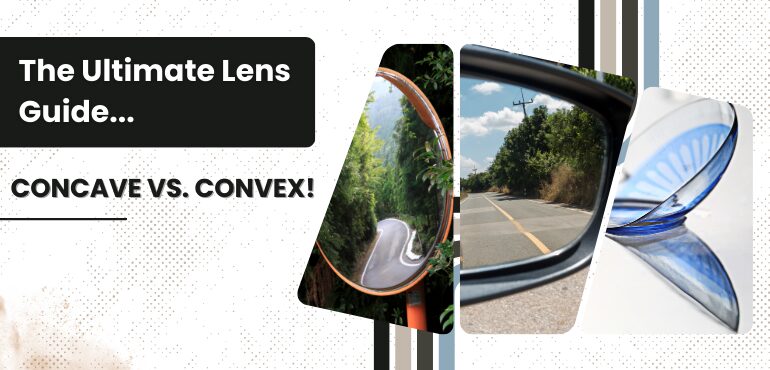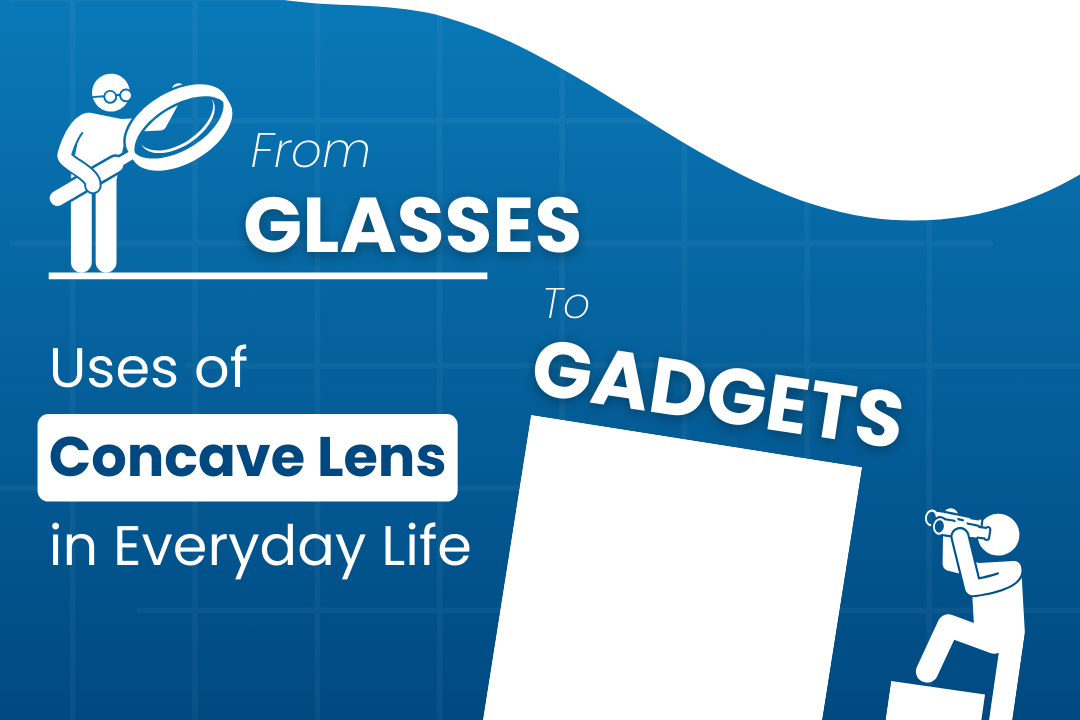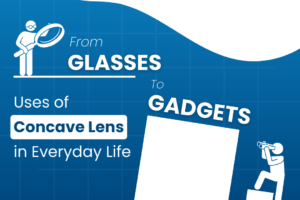
Lenses are crucial optical components that are used in the formation of images. Concave and convex lenses are the two primary types of lenses; each has special qualities and applications. In this comprehensive reference, we will examine the key differences between concave and convex lenses, along with information on their shapes, focal points, and numerous uses.
Concave Lens Definition
A concave lens is a type of lens that is thinner at its center and thicker at its edges. It diverges light rays that pass through it, meaning it spreads the light out. Concave lenses always produce virtual, upright, and diminished images.
Convex Lens Definition
A convex lens is a type of lens that is thicker at its center and thinner at its edges. It converges light rays that pass through it, meaning it brings the light together at a focal point. Convex lenses can produce both real and virtual images, depending on the position of the object.
Difference Between Concave and Convex Lens
Shape and Curvature
Convex Lens: Convex lenses have a bulging appearance because their center is thicker than their corners. Its curvature causes parallel light rays traveling through the lens to converge at a focal point on the other side.
Concave Lens: In contrast, concave lenses are thinner at the center and thicker at the edges, creating a curved, hollow appearance. When parallel rays of light pass through a concave lens, they diverge, and their extensions appear to meet at a virtual focal point.
Focal Points
Convex Lens: The focal point of a convex lens is real and located on the opposite side of the lens from the incoming light. This convergence of light rays is crucial for applications like magnifying glasses and camera lenses.
Concave Lens: Concave lenses have virtual focal points, seemingly located on the same side as the incoming light. The diverging rays create extensions that appear to meet at a point, making concave lenses useful in correcting myopia (nearsightedness).
Converging and Diverging Properties
Convex Lens: Convex lenses are known as converging lenses because they bring parallel rays of light together. This converging property is exploited in devices like telescopes and binoculars to magnify distant objects.
Concave Lens: Conversely, concave lenses are diverging lenses, spreading out parallel rays of light. They are used in correcting hypermetropia (farsightedness) and in devices like peepholes and some eyeglasses.
Image Formation
Convex Lens: Convex lenses form both real and inverted images when the object is beyond the focal point. When the object is within the focal point, convex lenses produce virtual and erect images, making them versatile for various applications.
Concave Lens: Concave lenses always produce virtual and erect images, regardless of the object’s position. The images formed are smaller than the actual object, making concave lenses suitable for corrective eyewear.
Applications
Convex Lens: Convex lenses find applications in numerous devices and industries. In photography, they are crucial components in cameras, focusing light to create clear images. Magnifying glasses, telescopes, and binoculars also rely on convex lenses to magnify distant objects.
Additionally, convex lenses are used in the field of medicine for magnifying and examining tissues, as well as in the design of corrective eyeglasses for individuals with presbyopia (age-related farsightedness).
Concave Lens: Concave lenses are widely used in correcting vision-related issues. Eyeglasses with concave lenses are prescribed for individuals with myopia, as they help to diverge incoming light and focus it directly on the retina.
Furthermore, concave lenses are used in various optical instruments, such as peepholes in doors and certain types of microscopes. Their ability to spread out light makes them valuable in specific optical setups.
Power and Focal Length
Convex Lens: The power of a convex lens is positive, indicating its ability to converge light. The focal length of a convex lens is measured from the lens to the point where parallel rays converge, and it determines the lens’s strength in bending light.
Concave Lens: Conversely, the power of a concave lens is negative, reflecting its diverging nature. The focal length of a concave lens is measured from the lens to the point where the diverging extensions of parallel rays appear to meet.
Here’s a concise comparison of concave and convex lenses in a tabular format:
| Property | Convex Lens | Concave Lens |
|---|---|---|
| Shape and Curvature | Thicker at the center, bulging shape | Thinner at the center, curved, hollow appearance |
| Focal Points | Real focal point on the opposite side | Virtual focal point on the same side |
| Converging/Diverging | Converging (brings light rays together) | Diverging (spreads out light rays) |
| Image Formation | Real and inverted for objects beyond the focal point | Virtual and erect for all objects |
| Applications | Cameras, telescopes, binoculars, magnifying glasses | Corrective eyeglasses (myopia), peepholes, microscopes |
| Vision Correction | Used for presbyopia (age-related farsightedness) | Used for myopia (nearsightedness) |
| Power and Focal Length | Positive power, focal length to convergence point | Negative power, focal length to the apparent divergence point |
Understanding these fundamental differences between concave and convex lenses is essential for appreciating their roles in various optical applications and corrective measures.
Concave mirrors are used to focus light to a single point, but the properties of concave lenses cause them to diverge light. This divergence of light in concave lenses results in images that are virtual and smaller compared to the real, magnified images formed by concave mirrors. While the concave mirror converges light to form real images, these properties ensure that the image formed is always virtual, smaller, and located on the same side as the object.
Conclusion
In conclusion, knowing the distinctions between concave and convex lenses is essential in many domains, including ordinary eyewear, photography, medicine, and optics. Different lenses have different features that suit them for different purposes, such as diverging light to correct visual deficiencies or convergent light to generate crisp images. By understanding these distinctions, people can appreciate the complex function of glasses in influencing our perceptions of and interactions with the outside world.








